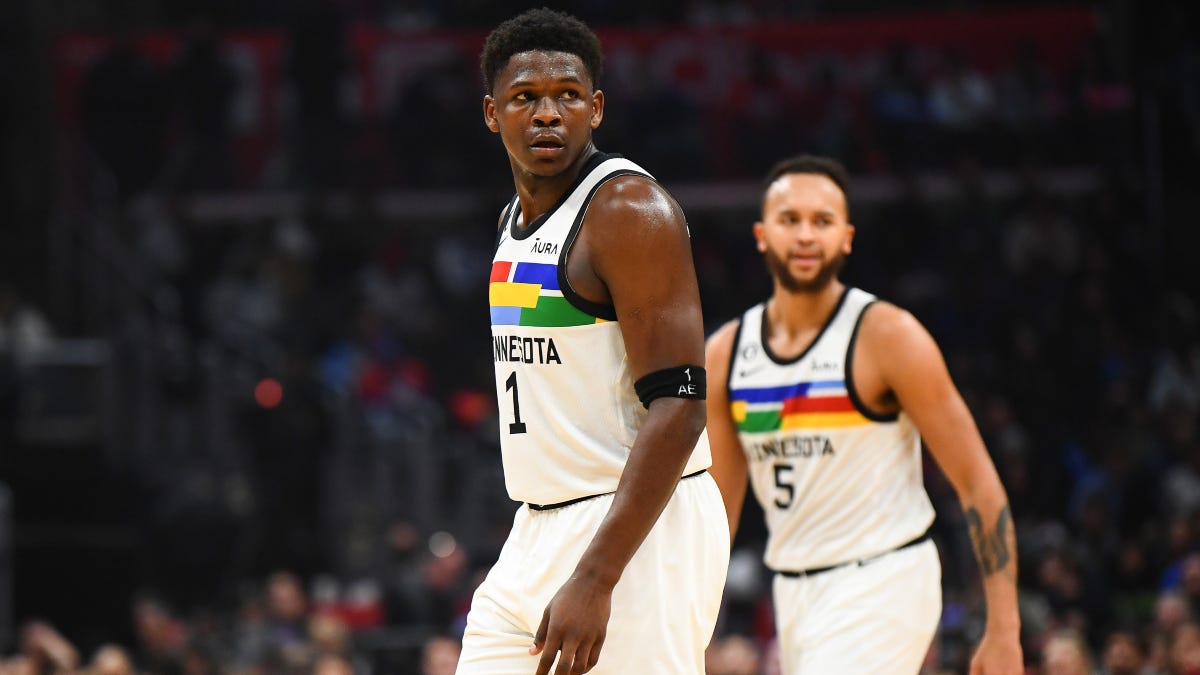The Final 16: What Worked For The Offense
The Timberwolves were the closest they would get all season to fully constituted in the final 16 games of their 2022-23 campaign, so what went right offensively?
Authors Note: This post may be too long for some email outlets. If that’s the case, click this link to read on the Howls and Growls website.
This past Minnesota Timberwolves season was as fragmented as it was confusing. Every time they found themselves closing on the large sample size precipice, another crowbar would emerge to wrench them into a different direction.
Whether it was Karl-Anthony Towns’ long-term injury or the D’Angelo Russell trade or any number of oddities in-between, the Wolves never found themselves on one road for long and that made analyzing what they are an ever-moving target. And, really, the only thing that they needed to get out of their first year with the two-big experiment was some real clarity and a real sample size. Without it, they are no closer to figuring out whether the cup that they’ve poured is swashing with golden wine, tepid water, or runny shit.
The closest thing they got to lucidity of their situation heading into the upcoming season was the final 16 games of the season. Naturally, Naz Reid still broke his wrist, Jaden McDaniels fought a concrete wall and abruptly lost, and Kyle Anderson’s eye was on the end of a devastating bout of friendly fire, but compared to the other sections of the seasons that was an improvement.
The entire Towns-less period should be stricken from the record when considering what the team as a whole can be going forward. Love him or loath him, if the big man is around when next season kicks off then he is going to be a massive part of what they do.
The same can be said for Mike Conley, who wound back the clock and roundhoused Father Time in the face after his trade deadline arrival. Point guard play and offensive system are inextricably linked, so the games prior to Conley’s inauguration also lose meaning in next season’s context.
So, even without Reid for 12 of the 16 games and McDaniels for 7 of the 16 games, that final stretch was the one that demands the most attention. With Towns in tow alongside Conley, Anthony Edwards, Rudy Gobert and the bulk of the returning role players, there was no better time for a glimpse of transparency in an otherwise murky season.
And, because the Wolves were clawing their way to the finish line, those games mattered more than most. The nine regular season games were all hugely important for the eventual standings, the play-in tournament was crucial, and the importance of each and every playoff game needs no explanation.
With that in mind, the first part of the Final 16 Series will be dissecting what worked for the Timberwolves’ offense in those 16 fateful games. Of all the things that need to be bottled up and released at will next season, the successful parts of the offense may be the most important.
According to Cleaning The Glass, the Wolves finished 23rd in points per 100 possessions last season (114.2) and while they upped that to a more middle-of-the-pack number over the final nine games of the regular season (115.4), it was still lackluster for a team that features some nuclear offensive talent. Evidenced once again by their points per 100 possessions falling to a dismal 109.4 across the play-in and playoff games.
That’s what happens with a team so lacking in chemistry and trudging through such a strangely segmented campaign. However, there were some real glimmers of hope as the end-of-season played out. If they’re able to capture, ferment, and expand on the concepts that worked at the backend of last season and weave them into their offensive DNA for next season, they should be able to squeeze more juice from their offensive firepower.
Keep reading with a 7-day free trial
Subscribe to Howls and Growls to keep reading this post and get 7 days of free access to the full post archives.




